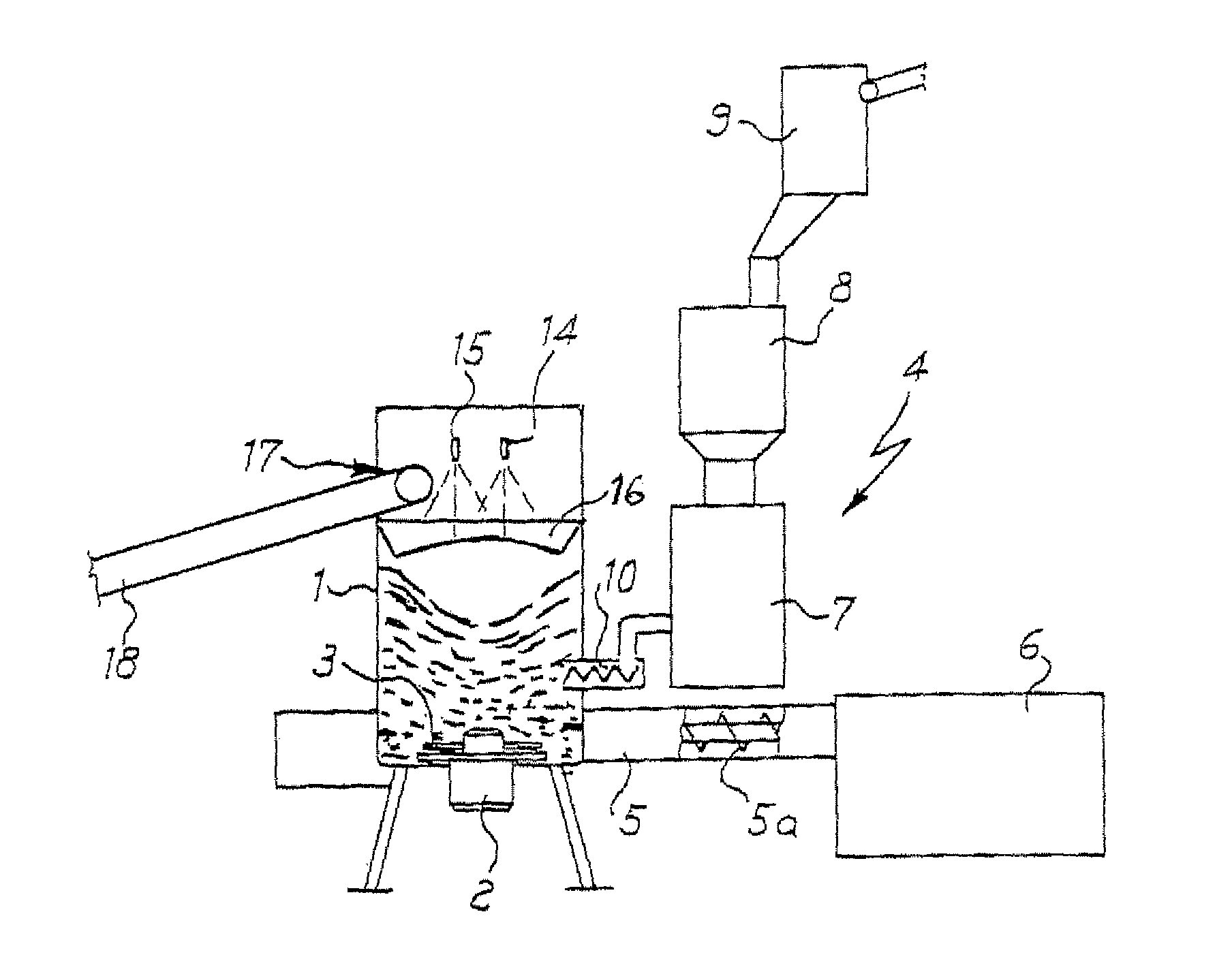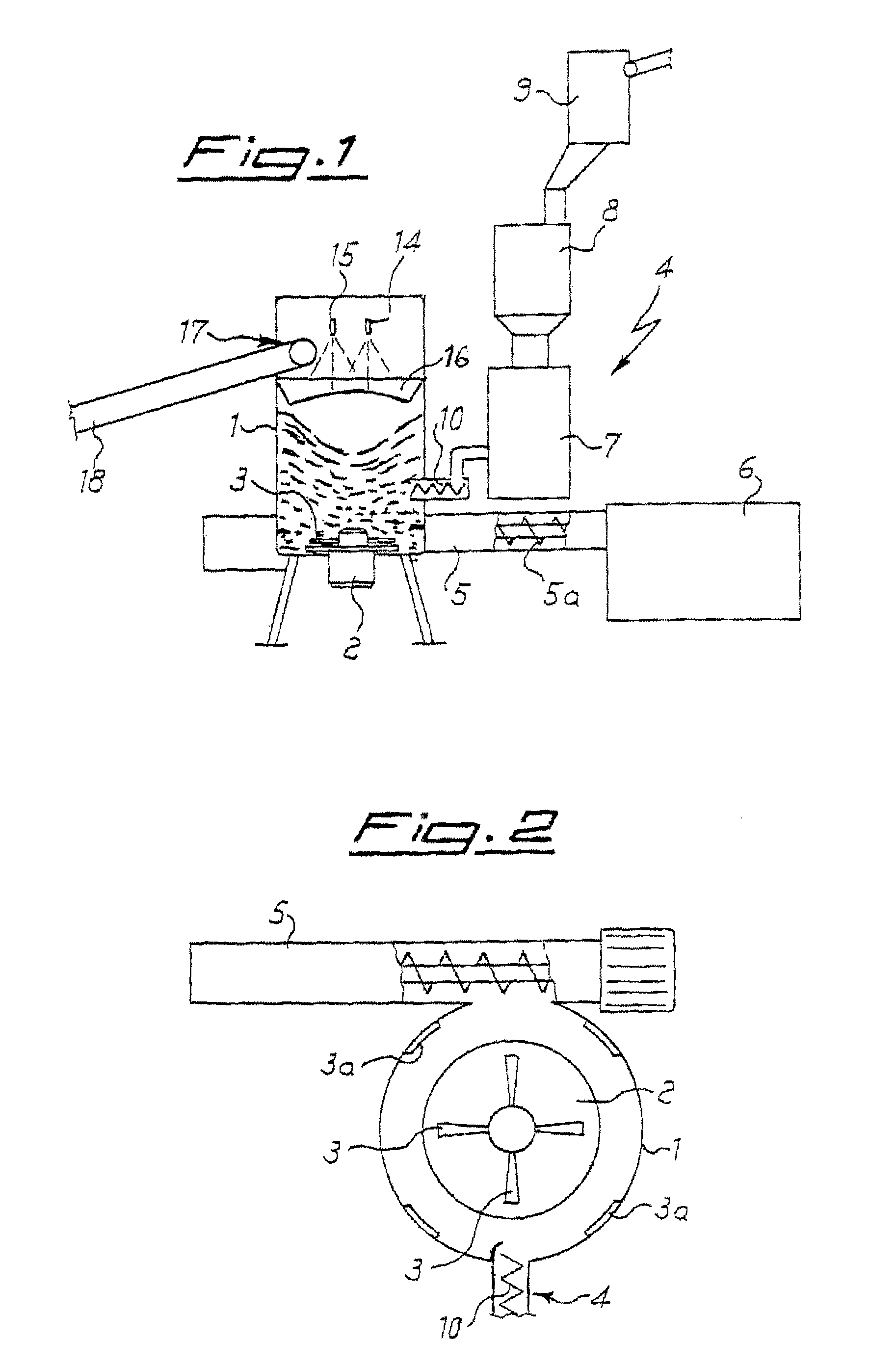Process and apparatus for the production of filled thermoplastic polymers
a thermoplastic polymer and thermoplastic technology, applied in the field of filling thermoplastic polymer processing, can solve the problems of high cost of a process starting with material in the form of granules or pellets, and the disadvantage is particularly fel
- Summary
- Abstract
- Description
- Claims
- Application Information
AI Technical Summary
Benefits of technology
Problems solved by technology
Method used
Image
Examples
example 1
[0052]In a typical process 400 kg / hour of waste polypropylene sheets are fed to a 2000 litre vertical container (hot mill) provided with a stirring / shredding device that rotates at 850 rpm and with a delivery extruder having a L / D ratio of 32, the extruder being provided with degassing, continuous filter and final granulator. The PP sheets fed to the container are weighed by four loading cells while it is being transported along belt conveyor 18, which is activated according to the quantity of material present in the container and its condition. The material is disintegrated and softened by the action of the stirring device and the blades 3 and 3a, so that a gradient of material is formed in the container, with material still in sheets in the upper part and softened and shredded material in the lower part of the container. The metering device 7 feeds 400 kg / hour of calcium carbonate with a ratio that is according to the amount of PP fed by belt elevator 18; the filler is fed to the ...
example 2
[0054]400 kg / hour of waste polypropylene sheets and 600 kg / hour of calcium carbonate are treated according to the process of example 1 to give 1000 kg / hour of 60% PP granules. The cost of this product is about 30% less than the traditionally obtained product.
PUM
| Property | Measurement | Unit |
|---|---|---|
| melting point | aaaaa | aaaaa |
| melting point | aaaaa | aaaaa |
| melting point | aaaaa | aaaaa |
Abstract
Description
Claims
Application Information
 Login to View More
Login to View More - R&D
- Intellectual Property
- Life Sciences
- Materials
- Tech Scout
- Unparalleled Data Quality
- Higher Quality Content
- 60% Fewer Hallucinations
Browse by: Latest US Patents, China's latest patents, Technical Efficacy Thesaurus, Application Domain, Technology Topic, Popular Technical Reports.
© 2025 PatSnap. All rights reserved.Legal|Privacy policy|Modern Slavery Act Transparency Statement|Sitemap|About US| Contact US: help@patsnap.com



